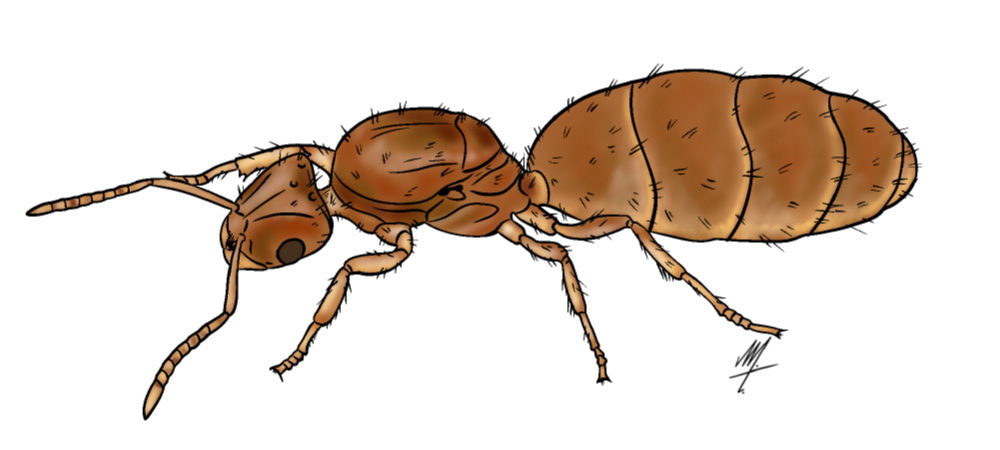Uncovering the Tiny Titans: Hairless Rover Ants
Get ready to shrink down to the size of an ant and explore the world of the Hairless Rover Ant. These ants may be tiny, but they’re super important in nature. With no hair and a knack for living almost anywhere, they’re like the secret agents of the ant world!
Meet the Hairless Rover Ant
The Hairless Rover Ant, or Brachymyrmex depsilis in science talk, is a teeny-tiny ant, just about as long as a grain of rice! They’re special because, unlike many other ants, they don’t have any hair. These guys range from light to dark brown, perfect for playing hide and seek in their environment.
Home Sweet Home
These ants aren’t picky about where they live. They make cozy homes in soil, under rocks, and sometimes in secret spots around our houses, like in potted plants. They’re pretty good at adapting, which means they can live in forests, gardens, and even busy cities!
Ants on a Mission
In a Hairless Rover Ant colony, everyone has a job. There’s the queen, who lays all the eggs, and lots of worker ants who do everything from finding food to taking care of the ant babies. It’s like a tiny city where everyone works together!
Yummy Eats
What do these ants eat? They love sweet stuff like honeydew from aphids and scale insects. But they’re not picky – they’ll also munch on small bugs and different organic bits they find on their travels.
Helping Nature
Hairless Rover Ants are like little gardeners. They help the soil by moving things around, which is great for plants. They also keep the bug population in check by eating some pests. Plus, their deal with aphids helps both the ants and the aphids survive.
Ants and Their Neighbors
These ants have buddies like aphids, but also some enemies like birds and bigger bugs. They sometimes have to battle with other ant families over food and space, just like in a game of capture the flag!
Baby Ants on the Way!
When it’s time for new ants to be born, the colony gets busy! Winged ants fly off to find mates, and then the new queens start their own families, making sure there are always more Hairless Rover Ants around.
Super Ant Skills
Being small and sneaky helps these ants stay safe. They work super well together, which makes them great at finding food and protecting their home.
Ants in a Changing World
Hairless Rover Ants face challenges like losing their homes to building and changes in the weather. But they’re really good at adapting, which means they can survive in lots of different places.
The Hairless Rover Ant shows us that even the smallest creatures can have a big impact on the world around them. They’re an important part of nature, helping everything stay balanced and healthy.




